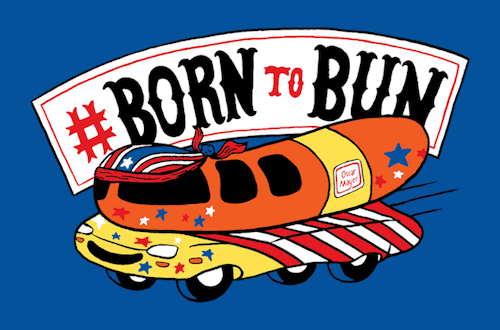Freshly Laundered 006 / Judson Collier

When designer and letterer Judson Collier launched his Fake It Till You Make It tee this past June, he did it in a way we’d never seen before. We had to get the scoop behind the idea for his dedicated site and his “celebrity endorsements”. Click through to get the scoop.

CB: Based on the site you made for your tee, we garner this idea came to you as a doodle, can you elaborate?
JC: Yes! Every once in awhile I’ll post some fun doodles on Instagram to share with friends, and so I had drawn out Fake It Till You Make it just to post on Instagram at first. I shot the image off to a couple of friends and they thought it would make a great tee!

CB: How’d you find out about Cotton Bureau and why did you decide to go with us versus someone else?
JC: I knew a lot of people who were using Cotton Bureau to sell tees— but what really drew me to using CB is that I didn’t have to worry about throwing a large chunk of money down ahead of time, knowing that I got enough of the right sizes.

CB: What made you think of designing a site to help promote your tee? What was the response like?
JC: Honestly, I wasn’t sure of how well the shirt was going to go, and I knew from previous experience promoting a shirt— no matter how hard you push it, you will still have 15 friends who would have bought the shirt had they known it was for sale.
I also tried to make a goal of pushing the shirt often, but not being spammy about it. The site really laid the ground work for that goal— just being open and honest with my friends, and asking big.

CB: The photoshops of celebs wearing your tees were great - we especially loved the Kanye one. What was the response like on twitter and instagram to those shots? Did you gain any new followers from doing those?
JC: YES. Absolutely my favorite part. I realized about halfway through that my tweets and posts were too formal for promoting the shirt. If you follow me on twitter, most of my tweets are jokes about pizza, taylor swift and annoying hipsters I see at coffee shops— so they definitely didn’t fit in.
This was right around the time that photo of Macaulay Culkin wearing a t-shirt of Ryan Gosling wearing a t-shirt of Macaulay Culkin came out, so the only thing I could think of is how hilarious it would be to show Ryan Gosling wearing my shirt.
The reception was awesome—and I ended up doing the same for Kanye and Kim, Lionel Richie and a few others. What was great is that I was able to promote the shirt really hard and still get a good laugh out of people— They ended up being some of my most popular posts!

CB: Any tips you have to pass on to other CB rookies?
JC: Self-promoting can be such a miserable thing, but if you be yourself and have fun with it, it’s so much easier for other people to enjoy it, and get behind you and your work.
If you’d like to see Jud’s tee up for sale again, sign up to be notified here. To keep up with Jud’s musings on pizza and Taylor Swift, follow him on twitter.
















